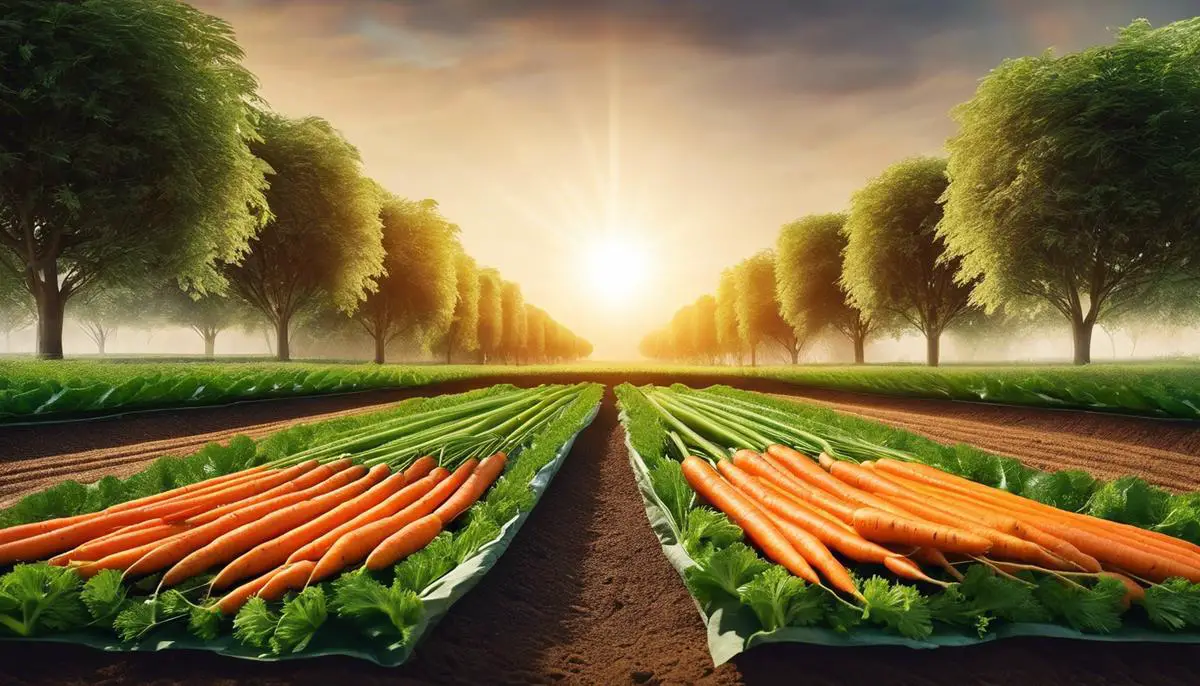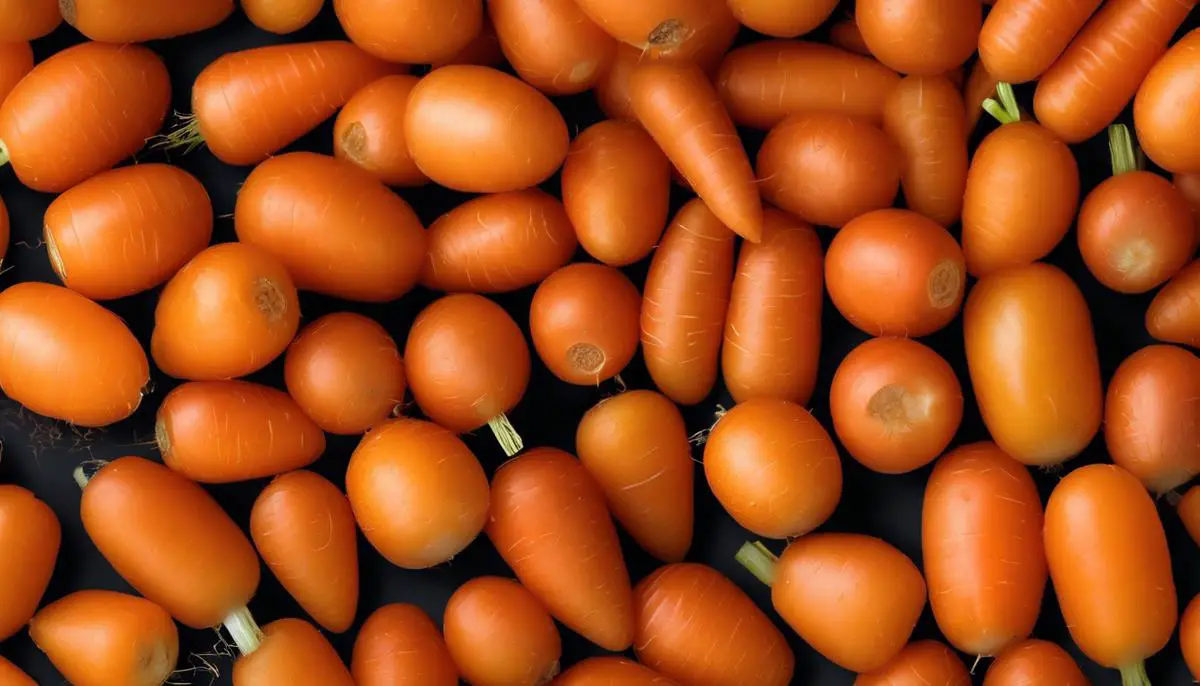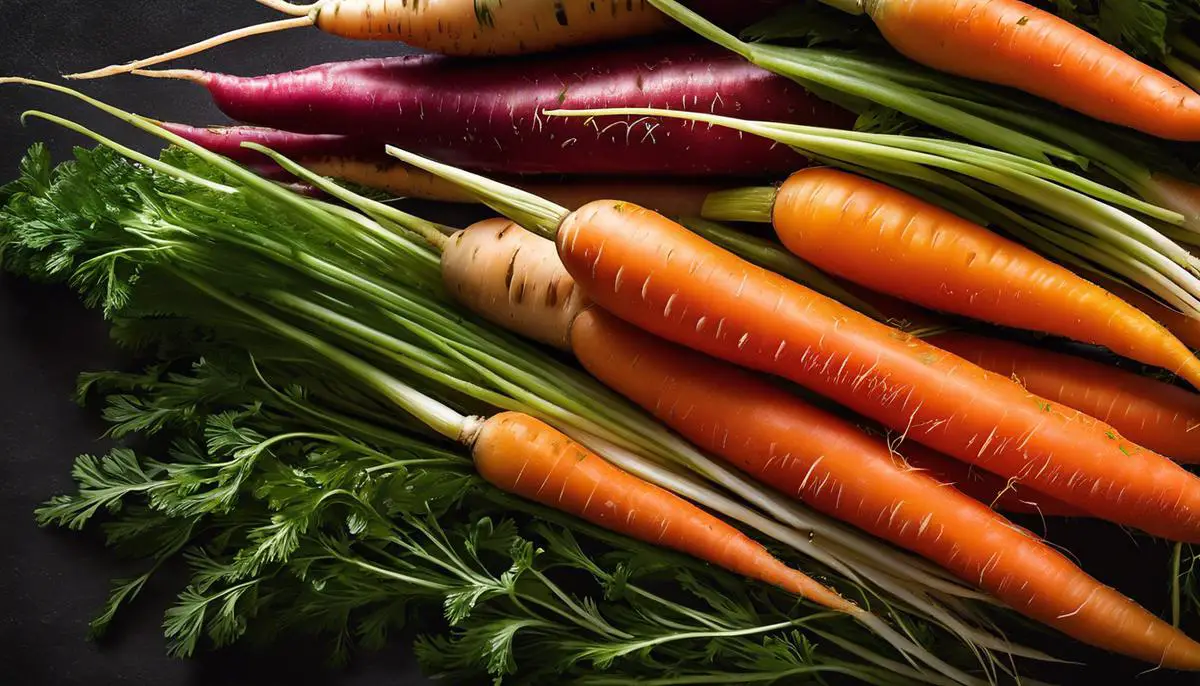The wonders of growing your own food can encompass a plethora of vegetables, but one that consistently piques the interest of home gardeners is the deceptively humble carrot. Carrots are not only nutritious but also brilliantly versatile, making them an excellent addition to any home garden. In this guide, we aim to illuminate the steps to successfully start your venture into carrot seed planting. Detailed below are key discussions on understanding the perfect growing environment for your soon-to-be vibrant, orange gems. We’ll delve into the preferred soil pH, sunlight exposure, and temperature range. We’ll also walk you through the strategic steps of seed planting to ensure optimum germination rates. Finally, we provide valuable information on carrot seed care and maintenance – how to water your sprouting seeds, when to introduce fertilizers, and notable signs indicating when it’s time to thin out the seedlings.
Understanding the Growing Environment
Growing Carrots From Seed: Unlocking the Perfect Environment for Thriving Carrots
Growing your own carrots can be one of the most rewarding and satisfying hobbies. It means you get to enjoy fresh, homegrown vegetables, and experience the journey from seed to harvest. But to get the best yield, it’s important to understand the optimal growing environment for carrot seeds. With the right knowledge, you’ll have a flourishing carrot patch in no time!
Reader Poll: What online courses would interest you?
Begin with the Basics: The Soil
Carrots favor loose, deep soil that’s rich in organic matter. A loamy or sandy texture allows the roots to grow straight and unobstructed. Avoid clay-heavy or rocky soils. In these, your carrots may become misshapen or forked. The pH level should be moderately acidic to neutral, between 6.0 and 7.0.
Drainage is Crucial
Subscribe to our newsletter!
Carrot seeds need soil that drains well to prevent water logging. However, it shouldn’t dry out too quickly. Overly dry soil might hinder the development of the roots, leading to split or cracked carrots. So, create a balance where the soil retains just enough moisture but also drains excess water efficiently.
Proper Spacing: Give Carrots Room to Grow
Spacing is vital for carrot seeds. Overcrowding can result in small carrots due to competition for resources. Sow seeds about an inch apart and about half an inch deep. Once the seedlings sprout, thin them out so they’re about 2-3 inches apart. This is the golden rule for a hefty carrot yield!
Honor the Sun and Shade Balance
Carrots love sunlight but also need cooler roots. They typically require at least six hours of direct sunlight daily for the best growth. However, in hotter climates, it’s beneficial to use shade cloth or companion plants to shade the soil surface during peak hours. This helps keep the roots cooler and reduces the risk of woody or tough carrots.
Watering: More Often, but Gentle
A key part of successful carrot growth is regular and gentle watering. In the early stages, providing consistent moisture is crucial for germination. The seeds are shallow-planted, and if the surface dries out, it can disrupt germination. So, water the soil more frequently but gently, to avoid washing away or disturbing the delicate seeds.
Nurture Your Soil with Nutrients
Adequate nutrients are vital for the thriving growth of carrots. Carrots are heavy feeders of potassium and phosphorus. Both of these elements promote healthy root development. An organic compost or well-rotted manure worked into the soil just before planting can provide these nutrients in the right amounts. Avoid too much nitrogen, as it can cause more foliage and less root development.
Every carrot seed holds the potential to thrive, grow strong, and yield a lush, crunchy, and sweet harvest. It’s up to you to unlock this potential by providing the optimal growing environment. As with any hobby, the key lies in patience and perseverance. Good things take time, and your vibrant, homegrown carrot patch will be worth the wait. Happy gardening!

Strategic Seed Planting
The Art of Sowing Carrot Seeds: A Comprehensive Step-by-Step Guide
Did you know that sowing carrot seeds is an art form, cultivated through time, patience, and a hearty scoop of passion? Knowing how to properly sow those tiny, mighty seeds makes all the difference for an abundant crop. Perfecting this task refines the overall process of growing carrots. So, let’s delve into the meticulous steps of this art form.
Step 1: Timing is KEY!
Carrots are relatively hardy and versatile vegetables, but when it comes to sowing seeds, timing is everything. Late spring to early summer is usually the best time. Carrots relish cool temperatures, and this timing allows them to root before the summer heat strikes.
Step 2: Prepare the Path
We’ve already talked about how important soil quality is, but your soil also needs to be well-tilled and free of rocks and debris. Aim for a finely raked, crumbly texture—a flawless bed for the seeds to nestle in.
Step 3: Creating Furrows
Next, it’s furrowing time. Use a hoe or a handle’s edge to create straight and shallow furrows around 1/2 inch deep — a divine depth for those precious seeds.
Step 4: Seed Distribution
Remember our discussion about spacing seeds? Now’s when it gets hands-on. Scatter your carrot seeds along the furrow as sparingly as possible. The seeds are minute and tend to cluster, but do your best! Overcrowding can lead to underdeveloped root growth, so do your darndest to avoid clumps.
Step 5: Cover & Tamp Down
You’ve distributed the seeds, fabulous! Now, gently cover the seeds using the soil you displaced when creating the furrows. Tamp down to ensure soil-seed contact, but be gentle! We don’t want to compact the soil; the goal is a snug, cozy blanket for our seeds.
Step 6: After-Sow Care
After sowing, your job isn’t over! Alongside regular, gentle watering, and sunlight regulation, remember to consider thinning. We love all our sprouts, but if they’re too close together, competition hinders optimal carrot growth. When the sprouts are about 2 inches tall, thin them out so there’s space of about 1 to 2 inches between each carrot sprout.
Learning to sow carrot seed is an enriching cultivation task that sharpens your gardening prowess. Just as a skilled painter masters their brushstrokes, a hobbyist gardener too refines the art of sowing. Keep sowing, keep growing, and most importantly—keep loving this fantastic hobby.

Carrot Seed Care and Maintenance
Having touched on the primary care requirements and setup for growing carrots, it’s time to delve deeper into the particulars that swing the pendulum towards verdant growth. Ensuring the vitality of your carrot seeds isn’t rocket science, but it does bear mastering certain beyond-basic skills and understandings.
Take the conditions for germination, for example, which are directly tied to the temperature. Carrot seeds sprout best when sowed in temperate weather, ideally when soil temperatures range from 50-85°F (10-29°C). Cold spells or overly warm weather at the inception of growth can hamper germination. Using a soil thermometer can take the guesswork out of gauging the correct soil temperature.
Inevitably, there are a few threats one must guard their carrots against. One of these is a pesky intruder known as the carrot fly. Adult carrot flies are drawn to the scent of crushed carrot foliage, laying their eggs around the plants. Unfortunately, their larvae feed on the carrot roots, potentially ruining the crops. The best approach is a preventive one: consider employing crop covers, and refraint from thinning your carrots.
When it comes to carrot growth, patience truly is a virtue. Unlike other vegetable seeds that may start showing themselves within a week, carrot seeds are known for their slow germination. It’s not uncommon for carrot seeds to take up to 14-21 days to sprout. So, do not fret and do not rush to re-seed. The wait will be well worth it.
Approximately 2-3 weeks after the seedlings appear, it’ll be time to start thinning the crop. This thurdily rewards the gardener with bigger, healthier carrots. The optimal spacing between the plants should be about 1-2 inches.
Birds can be another nuisance, as they have a predilection for tender carrot tops. Employ a bird-scaring device, or cover your row with a fine mesh until the carrot tops are tougher and less appealing to feathered foes.
Finally, the task of caring for your carrots involves monitoring their growth progress. With carrots, the size matters. If you’re growing a large variety like the ‘Danvers’, pay attention to the root shoulders poking through the soil surface; if they reach ¾ inch or more in diameter, it’s harvest time.
Each step involves a touch of tender loving care and a skosh of acquired skill. This powerful combo facilitates healthy growth in your carrot patch. The key takeaway? Embrace the journey and express your love for the earth and its enchanting processes. Your hands in the soil, your heart attuned to nature, and a final well-deserved crunch of a homegrown carrot – gardening offers joys that truly complete the circle of life.

Embarking on your journey of growing carrots from seeds can be an unbelievably rewarding experience. With the right understanding of the growing environment, a strategic approach to sowing your seeds, and insightful care and maintenance, a plentiful yield awaits your endeavor. Remember that patience is key when watching your seeds transform into blooming seedlings and eventually mature into beautiful, crunchy carrots. Like any other skill, you’ll find your methods improving the more seasons you cultivate. Every small win and hurdle you overcome will lead you to grow not just carrots, but also your skills as a gardener. May the joy of homegrown carrots inspire you to explore even more in the world of gardening.

